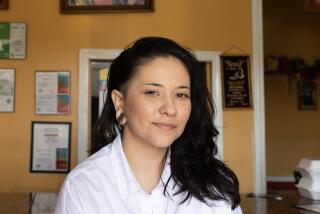Eras Are Different, Scars Are the Same
As I drive down San Fernando Road from Pacoima to San Fernando, I am startled to see the liquor billboards that abound along the route that during my childhood was devoid of advertisements. Ads for beer, wine, whiskey--in both English and Spanish--are everywhere. Worse, the liquor stores in the area keep multiplying. Is it any wonder that Latinos--who predominate in this sector--drink to excess?
In 1940s Pacoima, where I grew up, few liquor stores or beer joints (as they were then called) were found along Van Nuys Boulevard, the main street. Wine, I’m certain, was sold at the local market, and beer perhaps, but ours was a dirt-poor community with few consumers of hard liquor. Few of our Mexican neighbors drank; few could afford to! The exception was the father of my playmate. Most weekends he drank away his pay at a cantina. He staggered down the street where we kids played. Drunk, but happy, he tried to join our game as his daughter hid behind a tree. Once he went past, we resumed our game but with less enthusiasm. It was known that at home, my friend’s father yelled at his family. Pobrecitos (poor things). Only when he passed out did they feel safe.
My father drank very little, mostly when our uncle (a handsome but vain man) visited. Once he greeted my mother, he and my father drove to a winery in Sun Valley to buy a gallon of red, which they drank while they chatted. My mother, who rarely alluded to her alcoholic brothers in Mexico, cooked a special meal, then called the men inside. While they feasted on carne asada (roast beef) and hot tortillas, she sent my older sister to fetch the wine bottle, which she hid inside the pantry.
*
When in high school, few of us drank. Drinking and smoking on campus could get us expelled! Once, at an initiation party for new members of Las Tapatias, a San Fernando High School honor club for Mexican girls, we decided to buy Hill & Hill whiskey (it was the cheapest). I threw caution to the winds and drank it straight. When I began to retch--and the pepper trees seemed to sway--I staggered home, petrified of my sleeping parents.
Yet today, among college students it’s almost obligatory to imbibe. During spring break students high on beer and wine coolers run amok. While in the past heavy drinking was associated with guys, in the ‘90s more women are hitting the bottle. But is this female liberation?
Smoking and drinking go together; among Latinos youth it is a major problem, one not apparent in the ‘50s. As a teenager, I too, was dying to smoke. To look grown-up. Glamorous! My friends and I stole Lucky Strike and Camel cigarettes from our older siblings then, feeling terribly sophisticated, hid behind the bushes and puffed away. Later, when checking out guys we fell for those who looked good--and smoked. How were we to know smoking was harmful?
It was common knowledge that guys, especially the football players over whom we lusted, liked girls who knew how to party, and not stuck-up santitas (saints) who never missed Sunday Mass. It was said that girls who drank were “easy,” and no nice guys would marry them.
Still today, the scars associated with an alcoholic parent are difficult to heal; children suffer psychological traumas into adulthood. In a 1999 issue of Voces, a journal of the Chicana / Latina Research Center at UC Davis, a young woman recalls her papa:
He really wasn’t an alcoholic
he only drank on weekends . . . .
Alcoholics die young
bodies rotting from the poison eating livers and love . . . . “
More to Read
Sign up for Essential California
The most important California stories and recommendations in your inbox every morning.
You may occasionally receive promotional content from the Los Angeles Times.









